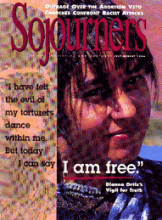Ahmed Timols body was returned to his family from police custody in October 1971 in a bloody, bruised, and disfigured manner. His fingernails had been ripped out. His teeth were broken. There were electric shock burns on his legs.
The face was covered in blood, the coffin was filled with blood. I will not forget what happened, his mother told the Johannesburg hearings of the South African Truth and Reconciliation Commission. Magistrate J.J.L. de Villiers, who presided over the inquest into Timols death at the time, found that Timol had been assaulted in police custody but that nobody could be held responsible for his death.
A young Swedish research student who sat through the hearings asked me whether I thought people could really be expected to forgive such atrocities. He reminded me that there are young people in South Africa who are asking for a commission of Justice and Revenge instead of Truth and Reconciliation.
The Truth and Reconciliation Commissionwhich was set up to promote reconciliation and a spirit of understandingheard the public testimony of more than a hundred witnesses during its first month. The horror of the stories told are such that the question posed by the Swedish visitor must be asked. Certainly one can understand the refusal of some to forgive. The amazing thing is that some who appeared before the commission say that they are ready to forgive.
Read the Full Article
